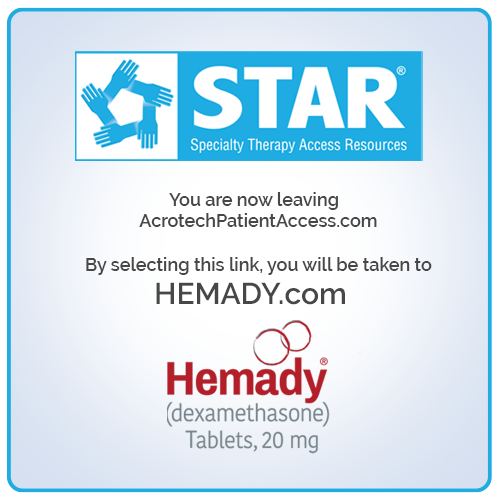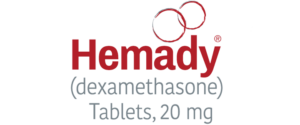
ZEVALIN® (ibritumomab tiuxetan) injection for intravenous use
Important Safety Information
| WARNING: SERIOUS INFUSION REACTIONS, PROLONGED AND SEVERE CYTOPENIAS, and SEVERE CUTANEOUS AND MUCOCUTANEOUS REACTIONS
Serious Infusion Reactions: Deaths have occurred within 24 hours of rituximab infusion, an essential component of the ZEVALIN therapeutic regimen. These fatalities were associated with hypoxia, pulmonary infiltrates, acute respiratory distress syndrome, myocardial infarction, ventricular fibrillation, or cardiogenic shock. Most (80%) fatalities occurred with the first rituximab infusion. Discontinue rituximab and Y-90 ZEVALIN infusions in patients who develop severe infusion reactions.
Prolonged and Severe Cytopenias: Y-90 ZEVALIN administration results in severe and prolonged cytopenias in most patients. Do not administer Y-90 ZEVALIN to patients with ≥25% lymphoma marrow involvement and/or impaired bone marrow reserve.
Severe Cutaneous and Mucocutaneous Reactions: Severe cutaneous and mucocutaneous reactions, some fatal, can occur with the ZEVALIN therapeutic regimen. Discontinue rituximab and Y-90 ZEVALIN infusions in patients experiencing severe cutaneous or mucocutaneous reactions.
Dosing: The dose of Y-90 ZEVALIN should not exceed 32.0 mCi (1184 MBq). |
Risk of Developing Myelodysplastic Syndrome, Leukemia and Other Malignancies:
The radiation dose resulting from therapeutic exposure to Y-90 radiolabeled ZEVALIN may result in secondary malignancies.
Myelodysplastic syndrome (MDS) and/or acute myelogenous leukemia (AML) were reported in 5.2% (11/211) of patients with relapsed or refractory NHL enrolled in clinical studies and 1.5% (8/535) of patients included in the expanded-access trial, with median follow-up of 6.5 and 4.4 years, respectively. Among the 19 reported cases, the median time to diagnosis of MDS or AML was 1.9 years following treatment with the ZEVALIN therapeutic regimen; however, the cumulative incidence continues to increase.
Among 204 patients receiving Y-90-ZEVALIN following first-line chemotherapy, 26 (12.7%) patients in the ZEVALIN arm developed a second primary malignancy compared to 14 (6.8%) of patients in the control arm. Seven patients (3.4%, 7/204) were diagnosed with MDS/AML after receiving ZEVALIN, compared to one patient (0.5%, 1/205) in the control arm, with a median follow-up of 7.3 years. Deaths due to second primary malignancy included 8 (3.9%) patients in the ZEVALIN arm compared to 3 (1.5%) patients in the control arm. Deaths due to MDS/AML included five (2.5%) patients in the ZEVALIN arm compared to no patients in the control arm.
Monitor patients for hematological toxicity including development of MDS or AML.
Extravasation: Monitor for extravasation and terminate infusion if it occurs. Resume infusion in another limb.
Immunization: Do not administer live viral vaccines to patients who recently received ZEVALIN.
Laboratory Monitoring: Obtain complete blood counts (CBC) and platelet counts at least weekly.
Radionuclide Precautions: During and after radiolabeling ZEVALIN with Y-90, minimize radiation exposure to patients and to medical personnel, consistent with institutional good radiation safety practices and patient management procedures.
Embryo-fetal Toxicity: May cause fetal harm. Advise patients of potential risk to a fetus and to use effective contraception during treatment and for a minimum of 12 months after the last dose of ZEVALIN treatment.
Impairment of Fertility: There is a potential risk that the ZEVALIN therapeutic regimen could cause toxic effects on the male and female gonads. Effective contraceptive methods should be used during treatment and for up to 12 months following the ZEVALIN therapeutic regimen.
Lactation: Patients should be advised to discontinue breastfeeding during and for 6 months after the last dose of ZEVALIN treatment.
Adverse Reactions:
The most common adverse reactions of ZEVALIN are cytopenias, fatigue, nasopharyngitis, nausea, abdominal pain, asthenia, cough, diarrhea, and pyrexia. Common adverse reactions (≥10%) in clinical trials were: cytopenias, fatigue, nasopharyngitis, nausea, abdominal pain, asthenia, cough, diarrhea, and pyrexia. The most serious adverse reactions of ZEVALIN are prolonged and severe cytopenias (thrombocytopenia, anemia, lymphopenia, neutropenia) and secondary malignancies.
When administered following first-line chemotherapy, grade 3/4 adverse reactions of ZEVALIN include prolonged and severe cytopenias (thrombocytopenia [51%], neutropenia [41%], leukopenia [36%], lymphopenia [18%], and anemia [5%]) and secondary malignancies (12.7%). Cytopenias were more severe and more prolonged among eleven (5%) patients who received ZEVALIN after first-line fludarabine or a fludarabine-containing chemotherapy regimen as compared to patients receiving non–fludarabine-containing regimens. Grade 3/4 infections occurred in 8% of ZEVALIN-treated patients and in 2% of controls and included neutropenic sepsis (1%), bronchitis, catheter sepsis, diverticulitis, herpes zoster, influenza, lower respiratory tract infection, sinusitis, and upper respiratory tract infection.
Grade 3/4 adverse reactions of ZEVALIN in relapsed or refractory NHL patients include prolonged and severe cytopenias (thrombocytopenia [63%], neutropenia [60%], anemia [17%], and ecchymosis [<1%]) and secondary malignancies (5.2%). Serious infections occurred in 3% of patients (urinary tract infection, febrile neutropenia, sepsis, pneumonia, cellulitis, colitis, diarrhea, osteomyelitis, and upper respiratory tract infection). Life-threatening infections were reported in 2% of patients (sepsis, empyema, pneumonia, febrile neutropenia, fever, and biliary stent-associated cholangitis).
Please click here to see the full Prescribing Information, including BOXED WARNINGS, for ZEVALIN. Because the ZEVALIN therapeutic regimen includes the use of rituximab, please also consult Prescribing Information for rituximab.
ISI-0154-079503


















